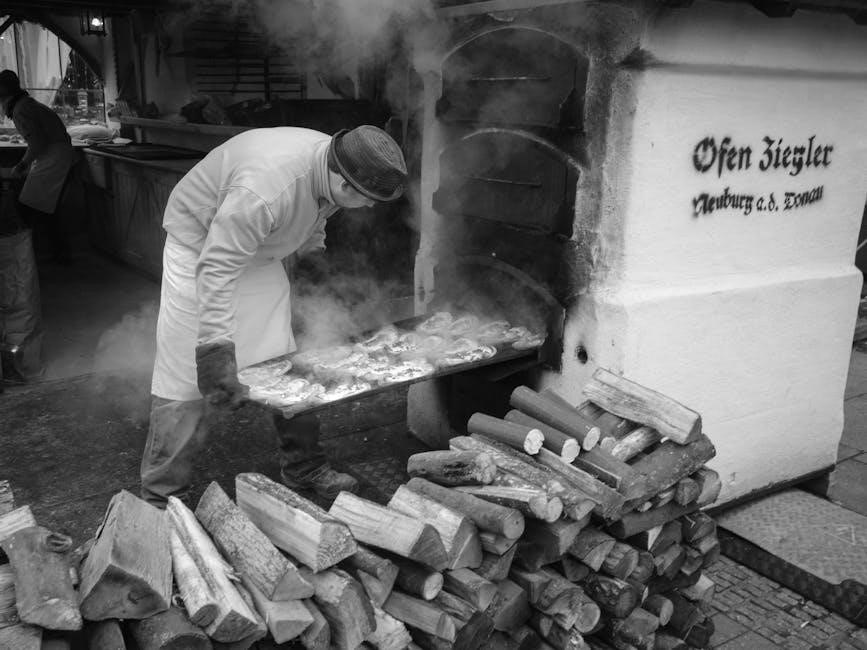
D&D Monster Manual: A Comprehensive Guide
The Monster Manual is a pivotal sourcebook, brimming with creatures from folklore and unique D&D creations. It details monster habits, statistics, and habitats and is a core component of D&D.
Dive into the heart of Dungeons & Dragons with the Monster Manual, the primary bestiary for the game. First published in 1977, it was the first hardcover D&D book. Within its pages lie creatures of myth and folklore, alongside original creations tailored for D&D adventures.
Each monster entry includes game-specific statistics like level or hit dice, descriptions of habitat and habits, and illustrations. The Monster Manual, alongside the Player’s Handbook and Dungeon Master’s Guide, is a core rulebook for most D&D editions, with new versions released for each edition.
It provides Dungeon Masters with the tools to populate their worlds with pesky goblins and mighty dragons, both for battle and beguilement. The Monster Manual is a critical component of Dungeons & Dragons, often expanded by third-party monster books. The 2024 D&D Monster Manual seeks to evolve.

History and Evolution
From its humble beginnings in 1977 to the present day, the Monster Manual has undergone numerous transformations, adapting to new editions while retaining its core essence as a bestiary.
The Original Monster Manual (1977)
The inaugural Monster Manual, penned by Gary Gygax and released in 1977, marked a turning point for D&D. It was the first hardcover book for Advanced Dungeons & Dragons and became a core manual. It brought together over 350 monsters, drawing from mythology, folklore, and original creations, providing detailed descriptions and game statistics.
The book presented monsters alphabetically with comprehensive information and illustrations. It was a supplement detailing standard monsters for AD&D, sourced from previous publications and Dragon magazine. This pivotal release helped define the visual style of wargaming books and was a compendium of published monsters, setting the standard for future editions.
The cover art, crafted by David C. Sutherland III, contributed to its iconic status. A softcover version was later printed in the United Kingdom by Games Workshop, expanding its reach and solidifying its place in gaming history.
Advanced Dungeons & Dragons Editions
The Advanced Dungeons & Dragons editions saw continuous evolution, with each iteration of the Monster Manual expanding upon the previous one. These editions served as essential compendiums, detailing a vast array of creatures for Dungeon Masters to populate their campaigns.
Monster Manual II, a core sourcebook, added even more monsters. Each new edition refined the monster statistics, lore, and presentation, ensuring compatibility with the evolving ruleset. These advancements offered Dungeon Masters a comprehensive selection of adversaries and allies to challenge players.
These later editions continued to include a mix of classic monsters and innovative creations, ensuring that the game remained fresh and exciting. The books provided detailed descriptions of each monster’s habitat, behavior, and tactics, enhancing the depth and realism of the D&D world. The AD&D Monster Manuals were invaluable resources for game masters.
D&D 5th Edition Monster Manual
The 5th Edition Monster Manual, released in 2014 and superseded by the revised 2025 edition, presents a curated selection of monsters, with rules and game statistics tailored for the edition. This manual serves as a primary resource for Dungeon Masters, offering a diverse range of creatures to challenge and engage players.
The 5th edition is designed for ease of use, providing clear and concise monster stat blocks and descriptive lore; The book includes iconic monsters and new creatures, ensuring a rich and varied bestiary. The manual helps Dungeon Masters populate their games with pesky goblins and mighty dragons.
The 5th Edition Monster Manual focuses on usability and accessibility, making it an invaluable tool for both new and experienced Dungeon Masters. The book is critical for D&D campaigns, and is often expanded by numerous third-party monster books.

Content and Structure
The Monster Manual details standard monsters, compiling descriptions, game statistics, and lore. Each monster is listed alphabetically, and features an illustration. The book teaches you how to fill your games with monsters.
Monster Statistics and Information
The Monster Manual is a crucial tool for Dungeon Masters, presenting comprehensive statistics for a vast array of creatures. These statistics include vital game information, such as armor class, hit points, attack bonuses, and damage dice. Each monster entry details special abilities, resistances, and vulnerabilities, providing DMs with the necessary information to effectively run encounters.
The manual also includes challenge ratings (CR) to help DMs gauge the difficulty of an encounter for a party of adventurers. CR values range from 0 to 30, indicating the level of experience needed to overcome a monster. The Monster Manual presents rules and information about monsters, and is intended primarily for use by the Dungeon Master.
Furthermore, each entry provides insights into the monster’s alignment, size, and type, informing the monster’s behavior and interactions within the game world. These elements, combined with detailed statistics, provide DMs with the necessary information to create challenging and engaging encounters.
Monster Lore and Habitat
Beyond mere statistics, the Monster Manual delves into the rich lore surrounding each creature, providing Dungeon Masters with narrative hooks and world-building elements. Each entry features a detailed description of the monster’s origins, behavior, and place within the D&D universe. This lore explores the creature’s motivations, social structures, and any unique cultural aspects.
The manual also outlines the typical habitats where these monsters can be found, ranging from dank dungeons and sprawling forests to scorching deserts and underwater grottos. This habitat information provides context for encounters, allowing DMs to create immersive environments that align with the monster’s natural surroundings.
By understanding a monster’s lore and habitat, DMs can craft more compelling stories and encounters, breathing life into their campaigns. The Monster Manual helps populate the game with mighty dragons, goblins, and other monsters.

Key Monsters and Their Significance
The Monster Manual showcases iconic creatures like dragons, goblins, and orcs. This section explores their unique roles in D&D culture, providing insights into their behaviors and impact on the game world.
Iconic Monsters: Dragons
Dragons, arguably the most iconic monsters in Dungeons & Dragons, embody power, mystique, and danger. The Monster Manual meticulously details various dragon types, from the chromatic red, green, blue, black, and white dragons to the metallic gold, silver, bronze, copper, and brass dragons. Each possesses unique abilities, breath weapons, and lairs.
Dragons challenge players with their strategic intelligence, magical prowess, and formidable physical strength. Dragons represent the ultimate test of a party’s skill and resourcefulness. Their hoards, filled with treasure and magical items, are legendary rewards for those brave enough to face them.
Dragons play diverse roles in campaigns, serving as adversaries, allies, or even quest givers. The Monster Manual arms DMs with everything needed to bring these magnificent creatures to life.
Classic Creatures: Goblins and Orcs
Goblins and Orcs, staples of fantasy literature and gaming, hold a prominent place in the D&D Monster Manual. These creatures, often encountered as low-level adversaries, provide an essential early challenge for adventurers. Goblins, known for their cunning and craven nature, typically operate in large numbers, overwhelming their foes with sheer volume.
Orcs, on the other hand, are fierce warriors, valuing strength and aggression above all else. Their tribal societies are built around raiding and conquest. The Monster Manual outlines their culture, combat tactics, and variations, such as Half-Orcs.
While individually weaker than many other monsters, Goblins and Orcs can be formidable opponents when organized under a strong leader. They serve as a recurring threat. They test player characters’ tactical abilities as they progress in experience.

Impact and Legacy
The Monster Manual’s influence extends beyond D&D, shaping game design and captivating D&D culture for 50 years. It establishes the creatures’ roles and continues to expand with new maps and monsters.
Influence on Game Design
The Monster Manual’s impact on game design is profound, establishing a framework for creature creation. It inspires countless bestiaries and monster compendiums across various RPGs. The manual’s detailed stat blocks and lore provide a template for designers to build compelling encounters. The creatures within have become archetypes, influencing the design of monsters in video games and other media. The Monster Manual continues to shape how game designers approach world-building, encounter design, and the creation of compelling adversaries. It has set a standard for detail and imagination in monster design. The book offers expanded variants, great for punching up hill giants. The D&D monster books evolve and remain a critical component of Dungeons and Dragons. The Monster Manual continues to inspire new generations of game designers. The book serves as a foundation for building rich and immersive game worlds. The manual’s influence is a testament to its enduring appeal and innovative design.
Role in D&D Culture
The Monster Manual is a cultural touchstone within the D&D community. It sparks imaginations and fuels countless adventures. The book’s monsters become iconic villains and memorable encounters in campaigns. It is a shared reference point, uniting players and DMs through a common understanding of D&D lore. The manual serves as a source of inspiration for fan art, stories, and homebrew content. Discussions about favorite monsters and memorable encounters are common within the community. The Monster Manual fosters a sense of nostalgia, harking back to classic D&D experiences. The manual contributes to D&D’s rich tapestry of shared stories and cultural references. Its monsters are woven into the fabric of D&D culture. The book is a gateway for new players, introducing them to the wonders and terrors of the D&D multiverse. D&D celebrates its 50th anniversary this year. Join in Indianapolis from August 1-4 for an unforgettable weekend of fun.